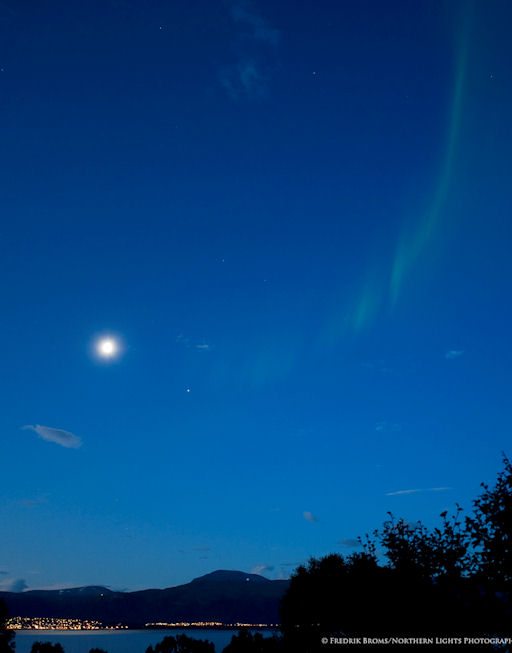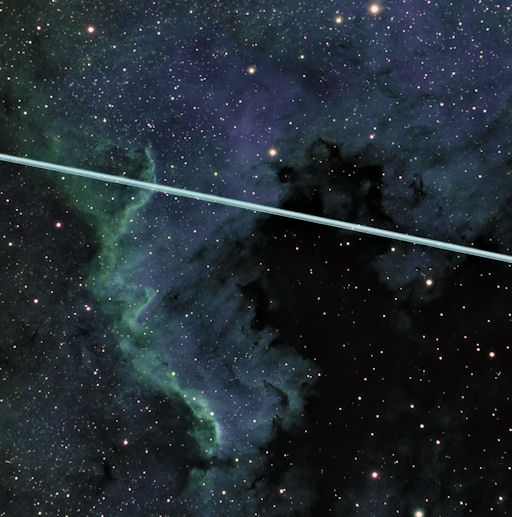They came from outer space--and you can have one! Genuine meteorites are now on sale in the Space Weather Store. | | |
HOW BIG WAS THAT METEOR? Last week, a picture of a Perseid meteor taken from the International Space Station became a minor internet sensation. Researchers from the NASA Meteoroid Environment Office have analyzed the image to figure out how big was that meteor? Watch the latest video from Science@NASA for the answer.
RETURN OF THE ARCTIC AURORA: Around the Arctic Circle, the night sky has been missing for months. "The midnight sun is a sore trial for amateur astronomers in the high North," says Fredrik Broms of Kvaløya, Norway. "But now, after a long summer without stars (save one), darkness is falling again. Last night when I was watching the beautiful conjunction of Jupiter and the Moon, the first auroras of the season suddenly appeared!" He recorded the scene with a 1-second exposure on his Nikon digital camera:

"I am looking forward to a great season with lots of activity on the sun!" says Broms.
Even brighter Northern Lights could appear in the nights ahead. A solar wind stream is heading for Earth, due to arrive on August 23-24. High-latitude sky watchers should be alert for auroras. Aurora alerts: text, voice.
August 2011 Aurora Gallery
[previous Augusts: 2010, 2009, 2008, 2007, 2006, 2005, 2004, 2003, 2002]
SPACE STATION TRANSIT: "During an observing run on August 17th, I decided to to test a new guide camera by imaging the North America Nebula (NGC7000)," says Nick Howes of Cherhill, Wiltshire , UK. "Just then the ISS decided to fly right through my image!" (continued below)

It might sound like an incredible stroke of luck to catch the ISS crossing an interstellar cloud, but this week the odds are tilted in some observers' favor. In Europe, the space station is passing overhead as often as three times each night, crossing stars, planets, and distant nebulae as it slides silently from horizon to horizon over and over again. If you live in that part of the world, check the Simple Satellite Tracker for flyby times; an incredible stroke of luck could be in the offing.
more images: from Jan Koeman of Middelburg, the Netherlands; from Efrain Morales Rivera of Aguadilla, Puerto Rico; from Stefano De Rosa of Isola d' Elba, Italy; from Martin Popek of Nýdek, Czech republic
2011 Noctilucent Cloud Gallery
[previous years: 2003, 2004, 2005, 2006, 2007, 2008, 2009]

